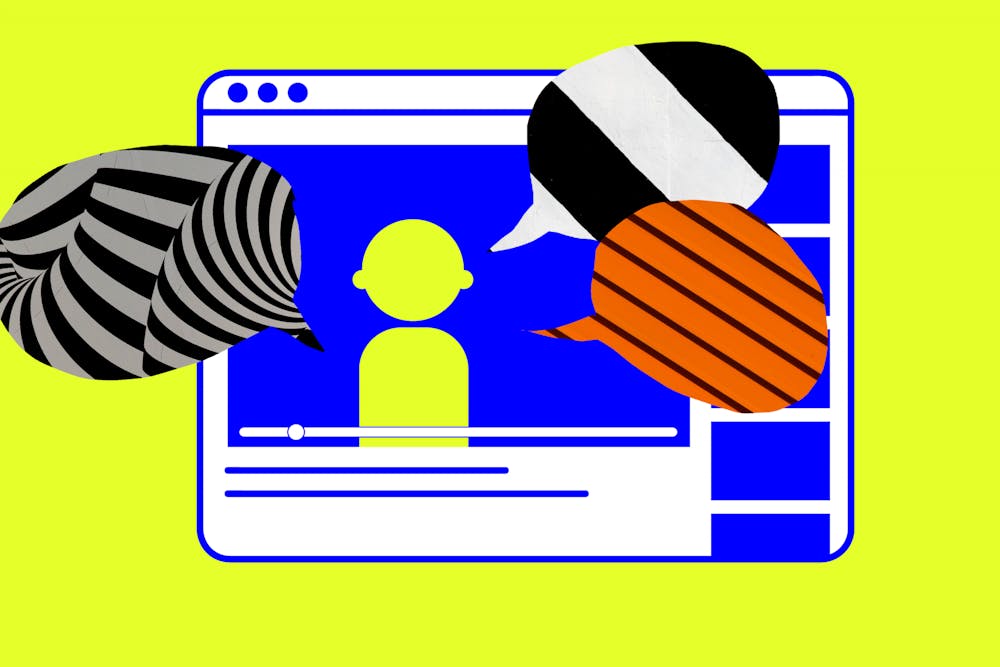“Hi, and welcome back to me talking about whatever I want. Today, I’m going to be talking about Shane Dawson,” D’Angelo Wallace deadpans, opening a one hour long video that would soon gain 14 million views and serve to affirm the end of vlogger and aspiring makeup artist Shane Dawson’s Youtube career.
Wallace is a seemingly normal 22–year–old who runs two massive Youtube commentary channels revolving around the latest internet happenings. From beauty guru Tati Westbrook to vlogger Jake Paul, Wallace carefully unpacks the controversies surrounding these influencers and explains exactly why they’re so problematic. With his incredible rise to YouTube fame, Wallace’s exponential growth reflects a greater digital cultural change.
However, with recent scandals regarding Dawson and his friend, beauty mogul Jeffree Star, accountability culture is becoming even more prevalent in the Youtube makeup community. With two “Dramageddons” and uncovering of racist behaviors, beauty influencers get “canceled” again and again. Despite frequency of cancelations, the careers of large makeup influencers such as Star and Nikita Dragun often seem untouched by the criticism that surrounds their social media presence. Yet with the rise of YouTube drama and commentary channels such as that of D’Angelo Wallace, that trend is changing.
Drama channels are often described as the “TMZs of YouTube”— they both report on and fuel the constant drama that happens within the Youtube community. The importance of these digital gossip channels became especially clear during the explosive, months–long controversy between Star, Dawson, Westbrook, and young beauty guru James Charles.
Popularly known as Dramageddon 2.0, this internet–breaking feud escalated from a perceived betrayal over hair vitamins to Tati Westbrook accusing James Charles of preying on straight men in her infamous “Bye Sister” video. With Dramageddon 2.0 touching many major players in the YouTube beauty community, viewers turned to drama channels such as Spill, Smokey Glow, and Wallace to explain the drama and offer their own perspectives.
Both Charles and Westbrook’s reputations were tarnished in the process as the entire internet watched and as drama channels analyzed their past behavior. Dawson and Star fueled Westbrook’s accusations of Charles before they were debunked, and Westbrook then made another video titled “Breaking My Silence,” accusing them of manipulating her. Soon after this video, the attention shifted to Dawson and Star, with Dawson being exposed by drama channels for children–grooming in past videos. Not only did YouTube drama channels search for evidence that further fueled public perceptions and extended Dramageddon 2.0, but they also brought a new level of accountability to these influencers’ actions. By holding influencers accountable for past problematic instances, drama channels now hold the key to shaping influencer narratives on YouTube.
By increasing the frequency of and attention paid to influencer cancelations, drama channels are now often responsible for defining the line between toxic “cancel culture” and holding YouTubers accountable for damaging actions. As shown by the similarities between the cyberbullying of Charles based on untruthful sexual harassment claims rooted in homophobia and the de–platforming of Dawson due to documented instances of racism and child–grooming, drama channels can quickly mobilize their viewers even if the context is not fully known.
In fact, it could be argued that these commentators now hold the most power in the public perception of influencers—even more than the influencers themselves.
Influencers have quickly realized the power of the drama channel. Similar to how celebrities call the paparazzi on themselves, YouTubers have started to pay drama channels to “take down their competition” or to draw more positive (or negative) attention to them, allowing influencers a semblance of control over their own narratives.
The role that drama channels play in YouTube culture is layered and complex, filled with contradictions, nuances, and responsibilities that can make or break an influencer’s career with just one video. Yet what spurred the rise of these drama channels and gave them this immense power is the viewers themselves.
Drama channels serve as an outlet to both educate and escape, providing watchers with the ability to immerse themselves in the seemingly artificial realm of YouTube. Similar to how we turn to video games and TV shows to distract from everyday life, drama channels fuel this sort of escapism that often goes unnoticed. Despite the fact that drama channels can help us detach from the reality of our own lives, we have to remember that this drama often comes at the expense of the reality of others. While it’s incredibly necessary and important to hold public figures accountable for their actions and their resulting consequences (looking at you, Shane Dawson), we need to recognize that influencers are people too.







